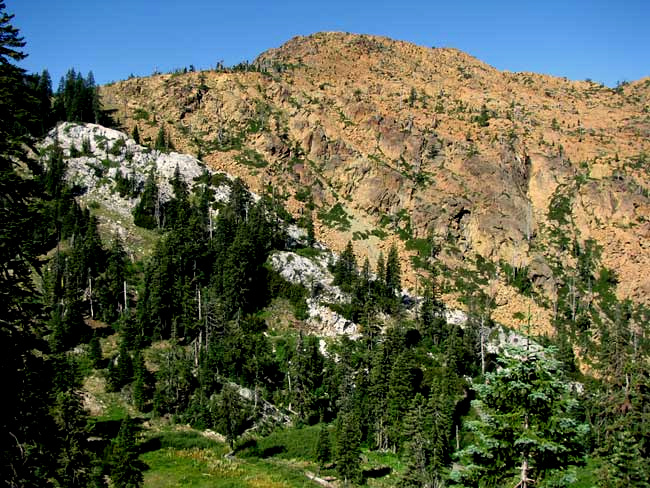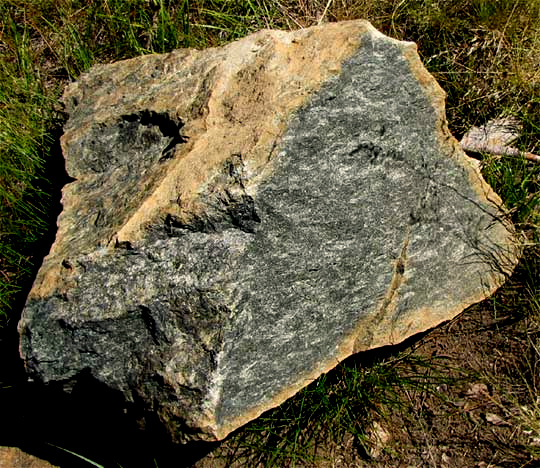Excerpts from Jim Conrad's
Naturalist Newsletter

from the July 26, 2009 Newsletter, describing a backpacking trip on the Pacific Crest National Scenic Trail in Red Buttes Wilderness Area, Siskiyou County, California:
PERIDOTITE
We were in the Red Buttes Wilderness Area, and those red buttes were red -- actually reddish orange -- because the rock of which they are composed, known as PERIDOTITE, contains high concentrations of iron and magnesium. When those minerals combine with oxygen in the air they turn reddish orange. You could say accurately that the rocks
"rust," and that's why they are rusty colored.
On our last day out as we descended to our next camp at Towhead Lake I snapped the picture shown above.
Two things to notice there are how limited the vegetation is on the red-orange peridotite of which most of the mountain is composed, and how trees suddenly appear on the white below the peridotite. That white outcrop is composed of marble, limestone, and intermediate limy-rock states, marble being metamorphosed limestone,
The picture shows Kangaroo Mountain and books say that the peridotite making up both Kangaroo Mountain and the Red Buttes probably originated as molten magma deposited on the floor of an ancient ocean. Several hundred million years ago our marble/limestone was that ocean floor, a carbonate-rich marl like many ocean floors, which eventually solidified into limestone and now at least some of it has metamorphosed into marble.
Beside my tent at Towhead Lake I photographed a broken-open peridotite stone with a "rusted," red- orange exterior and slate-gray interior, as shown below:

Peridotite is worth knowing because it's THE dominant rock of the upper 250 miles (400 kms) of the Earth's mantle. We don't hear much about peridotite because typically it's buried beneath other rock types. That would be the case here, too, were it not for this area's rambunctious geological history, too complex to go into here.
In general, peridotite is a coarse-grained, igneous rock consisting mostly of the minerals olivine and pyroxene. Because it contains less than 45% silica, it's said to be "ultramafic." As we've seen, it's high in magnesium and iron. When peridotite occurs at the Earth's surface we know that either it has been carried up from the Earth's mantle during mountain- building processes, or else it's crystallized from magmas forming dikes, sills or other features associated with vulcanism.